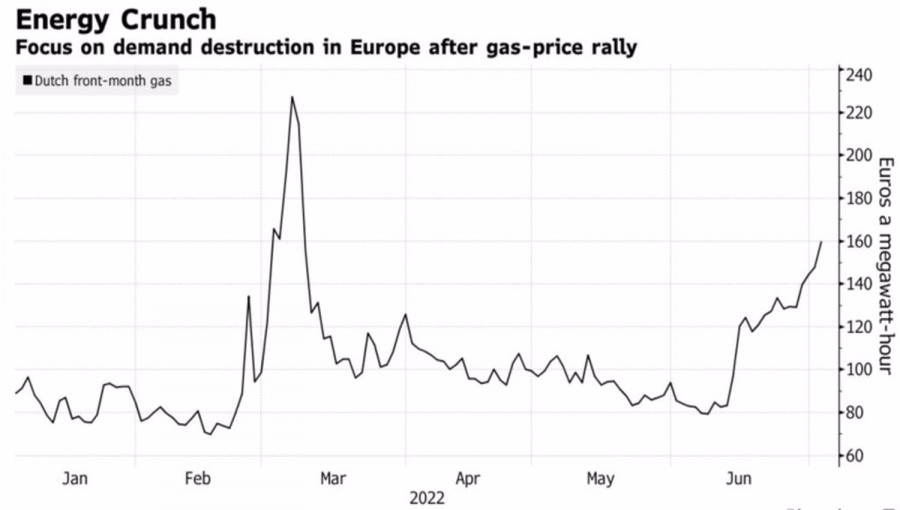
Gas prices are skyrocketing, exacerbating the negative impact of the energy crisis on the fragile eurozone economy, and Germany is recording its first foreign trade deficit in three decades. Both news is negative for the euro, however, EURUSD starts the week of June 8 on a healthy note. Paradox? Not if you understand the nature of financial markets. A lot of bad news has already been priced into the single European currency. Like much good news in the US dollar. On the eve of such important events as the publication of the minutes of the June meetings of the Fed and the ECB, as well as the release of data on the US labor market, it would be nice to reconsider positions. That's what traders do.
To the negative in the form of Russia's reduction of gas sales to Europe and the closure of the export facility to the United States, which is key for the supply of blue fuel to the euro area, another one has been added. About 13% of gas supplies from Norway are at risk due to the imminent strike of workers in the sector. Unsurprisingly, prices are rising by leaps and bounds, adding to the ECB's headache. The structure of inflation growth in the eurozone suggests that not everything is in the hands of the central bank. It needs to count on a miracle in the form of falling energy prices.
Dynamics of gas prices

Despite inflation accelerating in the eurozone to a new all-time high of 8.6% and even higher figures in Estonia, the head of the local central bank, Madis Muller, believes that the deposit rate should be raised only by 25 bps in July. Many of the Governing Council's hawks are taking a more drastic step and call Christine Lagarde's plan for gradual monetary restriction a political mistake. The money markets seem to agree with them. They expect to see borrowing costs in March 2023 by 200 bps, higher than at present. But back on July 1, it was about 173 bps.
Obviously, the current movements of EURUSD are entirely a betting game. In this regard, it is understandable why the first foreign trade deficit in Germany in the last 30 years was ignored by investors. Due to higher costs, imports rose 2.7% in May, while weakness in major trading partners led to a modest 0.5% increase in exports. As a result, the negative trade balance amounted to €1 billion.
Dynamics of Germany's foreign trade


In my opinion, the reasons for the euro's counterattack should be sought not only in the increase in the expected value of the ECB rate, but also in the fall in the yield of US Treasury bonds amid the approaching recession, as well as in the closing of positions by traders on the eve of important events of the week by June 8. The slowdown in employment to 275,000 expected by Bloomberg experts is seen as grounds for the Fed to put on the brakes in the process of monetary restriction.
Technically, there is a 1-2-3 reversal pattern on the EURUSD 4-hour chart. A break of the correction high at point 2 near 1.049 could be grounds for short-term long positions in the direction of 1.0525.